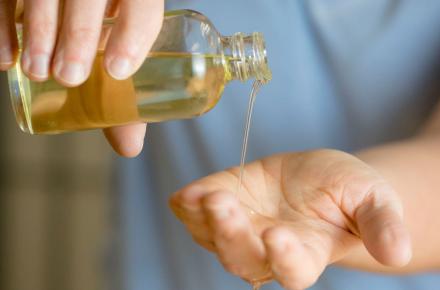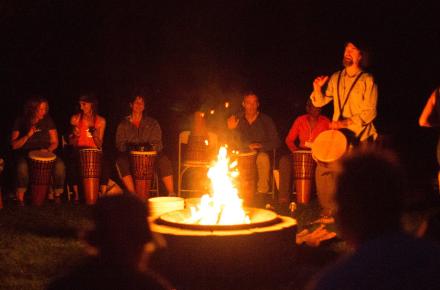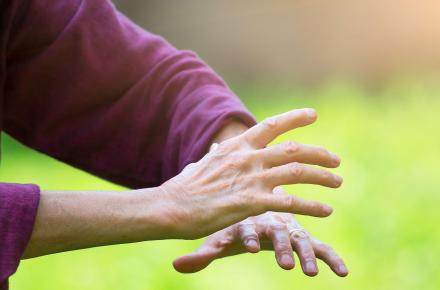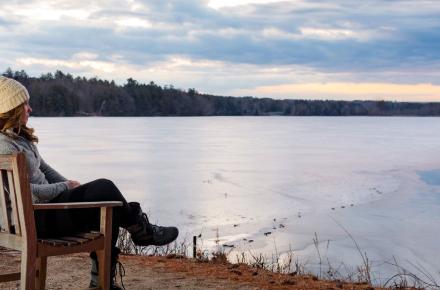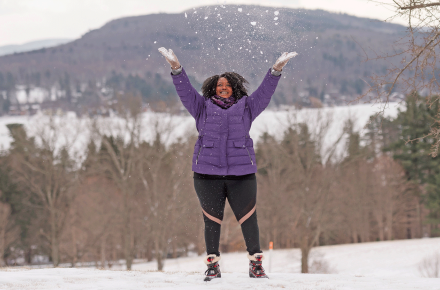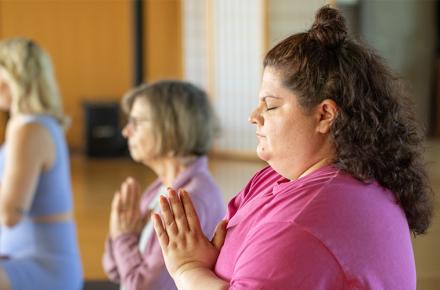An Ayurvedic Approach to Flourishing in Winter


Feel like hibernating this winter? Extra rest and a warming diet might be just what you need—or maybe a round of vigorous Sun Salutations will help you shake off the sluggishness. It's all about listening to your body and balancing the heaviness of kapha (which can create sluggishness) with the lightness of vata, which dominates the cold season.
Start by incorporating these three Ayurvedic routines into your morning.
- Perform garshana, or dry skin brushing, daily before showering, using raw silk gloves and a skin brush, soft sponge, or facecloth. Massage the skin toward the heart, applying long strokes on long bones and circular strokes on your joints (avoid massaging heart and face). This strips off dead, dry, rough skin and improves circulation. Finish with your feet.
- Upon waking, use a neti pot with a simple saline solution (available at most health-food stores or online) to clear the sinuses. This wards off illness by clearing out germ-harboring mucus, allows for deeper breathing, and improves our olfactory function. Apply a dab of sesame oil in each nostril after use.
- Practice five to 10 rounds of a simple Sun Salutation, igniting peristalsis (which stimulates metabolism and elimination), raising the core temperature of the body, getting the lymphatic system moving, and waking up the nervous system. This will invoke the qualities of warmth, mobility, and lightness to oppose the cold, inert heaviness of built-up kapha.
If you’re able to spend more time on your morning practice, here are a few invigorating suggestions to incorporate into your sequence:
- Twists of all kind help to wring out the heaviness and mucus that can build up from excess kapha. Try twisting in Chair pose, Lunge, and/or seated postures.
- Integrate Warrior variations with a deep bend in the front knee (while remaining safe and compassionate with your body), keeping heart and shoulders open as you reach and look up toward the sky.
- Pulse in and out of Cobra pose, opening the heart and front of the body, where kapha can build up.
- After an exhale, pause and hold out the breath for a moment before inhaling. Do this several times and pause to observe the sensation.
- Turn your drishti, or focused gaze, upward toward the ceiling or sky as you move.
- Throw in a few challenging poses, such as Plank or Balancing Stick, or stay longer than usual in Warrior II. Notice how you feel as sensations begin to build.
- Invoke a deep and audible ujjayi pranayama (Ocean-Sounding Breath) throughout your practice.
- Take time to meditate at the end of the practice, using a warming visualization such as the sun or a flame.
- End with a short Savasana, a seated meditation, or a restorative, supported inversion like Legs up the Wall.
© Kripalu Center for Yoga & Health. All rights reserved. To request permission to reprint, please e-mail editor@kripalu.org.



























